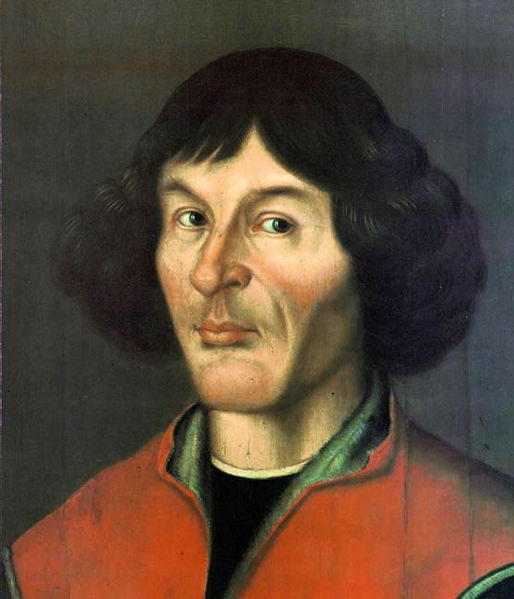| Mathematician Biographies |
| Pythagoras |
| Archimedes |
| Eratosthenes |
| Nicolaus Copernicus |
| Leonardo da Vinci |
| Galileo |
| Sir Isaac Newton |
| Ava Lovelace |
| Srinivasa Ramanujan |
| Albert Einstein |
 |
Nicolaus Copernicus |
Nicolaus Copernicus was an astronomer, mathematician, translator, artist, and physicist among other things. He is best known as the first astronomer to posit the idea of a heliocentric solar system—a system in which the planets and planetary objects orbit the sun. His book, De revolutionibus orbium coelestium, is often thought of as the most important book ever published in the field of astronomy. The ensuing explosion or research, observation, analysis, and science that followed its publication is referred to as the Copernican Revolution.
Copernicus was born February 19, 1473, in what is now northern Poland. He was the son of wealthy and prominent parents and had two sisters and a brother. Sometime between 1483 and 1485, his father died, and he was put under the care of his paternal uncle, Lucas Watzenrode the Younger. Copernicus studied astronomy for some time in college but focused on law and medicine. While continuing his law studies in the city of Bologna, Copernicus became fascinated in astronomy after meeting the famous astronomer Domenico Maria Novara. He soon became Novara’s assistant. Copernicus even began giving astronomy lectures himself. After completing his degree in canon (Christian) law in 1503, Copernicus studied the works of Plato and Cicero concerning the movements of the Earth. It was at this time that Copernicus began developing his theory that the Earth and planets orbited the sun. He was careful not to tell anyone about this theory as it could be considered heresy (ideas that undermine Christian doctrine or belief).
In the early 1500s, Copernicus served in a variety of roles for the Catholic Church, where he developed economic theories and legislation. Astronomy became little more than a hobby for Copernicus, who never worked professionally in the field. By 1514, however, Copernicus became so convinced in the theory of a heliocentric (sun-centered) solar system that he began to share his notes with friends. Nearly twenty years later, after an Italian astronomer gave a lecture outlining Copernicus’s ideas, he was ready to deliver an official book about his theory. In 1542, the book was finally published. The book was called De revolutionibus orbium coelestium (On the Revolutions of Celestial Spheres). In the book, Copernicus explained that the Earth rotated along its axis and orbited the sun once per year. He correctly positioned all of the known planets at the time and explained why the seasons occurred. He also argued that the distance from the Earth to the sun is much less than the distance from the Earth to other stars. Copernicus died a year later, in 1543. Surprisingly, his work caused little immediate controversy (which is one reason scholars believe Copernicus was so reluctant to have his work published). It was, however, condemned by the Roman Catholic Church in 1616, which accused Galileo of heresy for supporting Copernicus’s theories in 1633. Galileo was forced to stay in his house for the rest of his life. The condemnation was officially lifted in 1835.
The ideas of Nicolaus Copernicus were instrumental in the evolution of the field of astronomy. Virtually every notable astronomer who proceeded him was vastly influenced by his theories. Galileo, Johannes Kepler, and others were among the astronomers who sought to add to and improve upon his work.